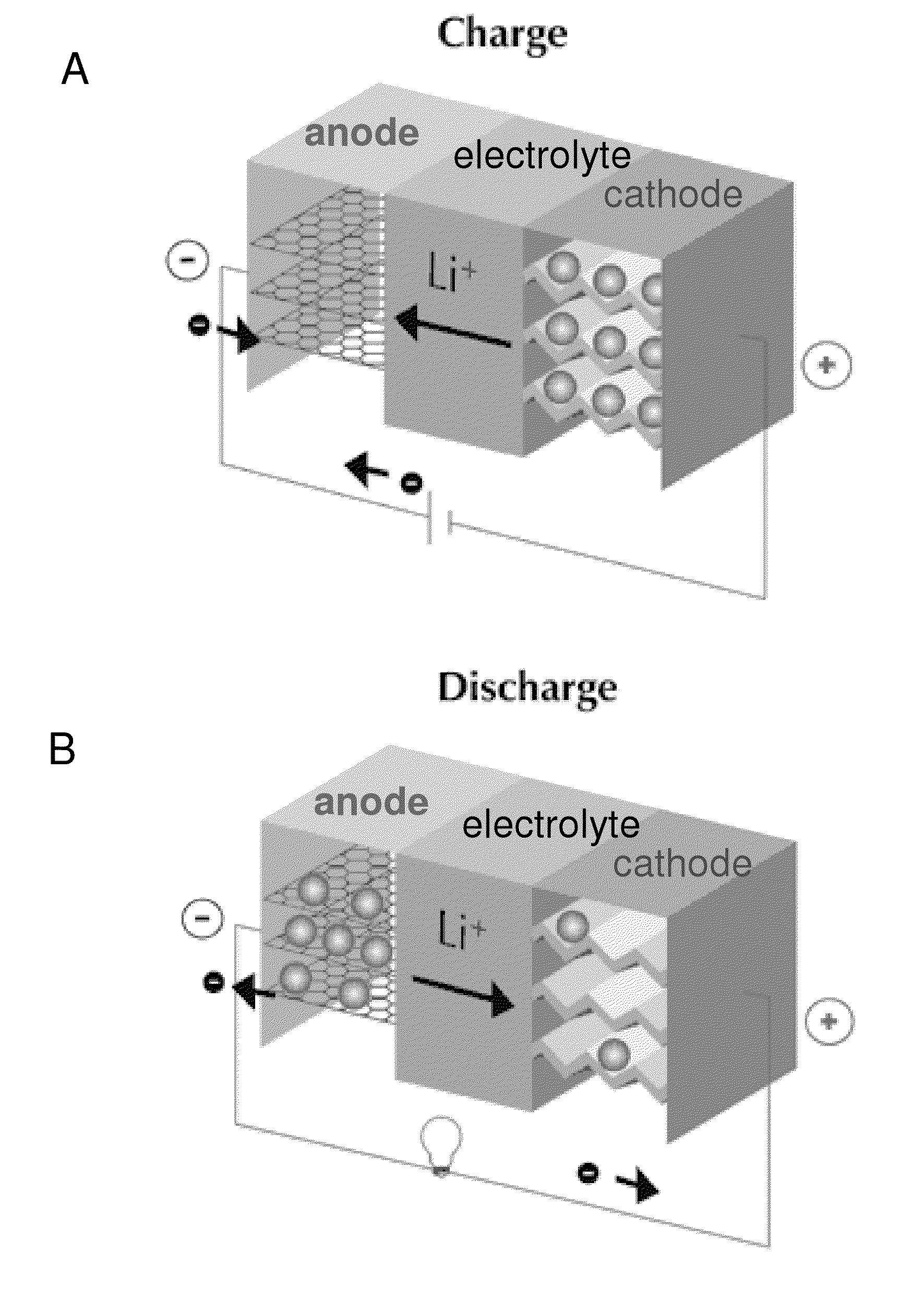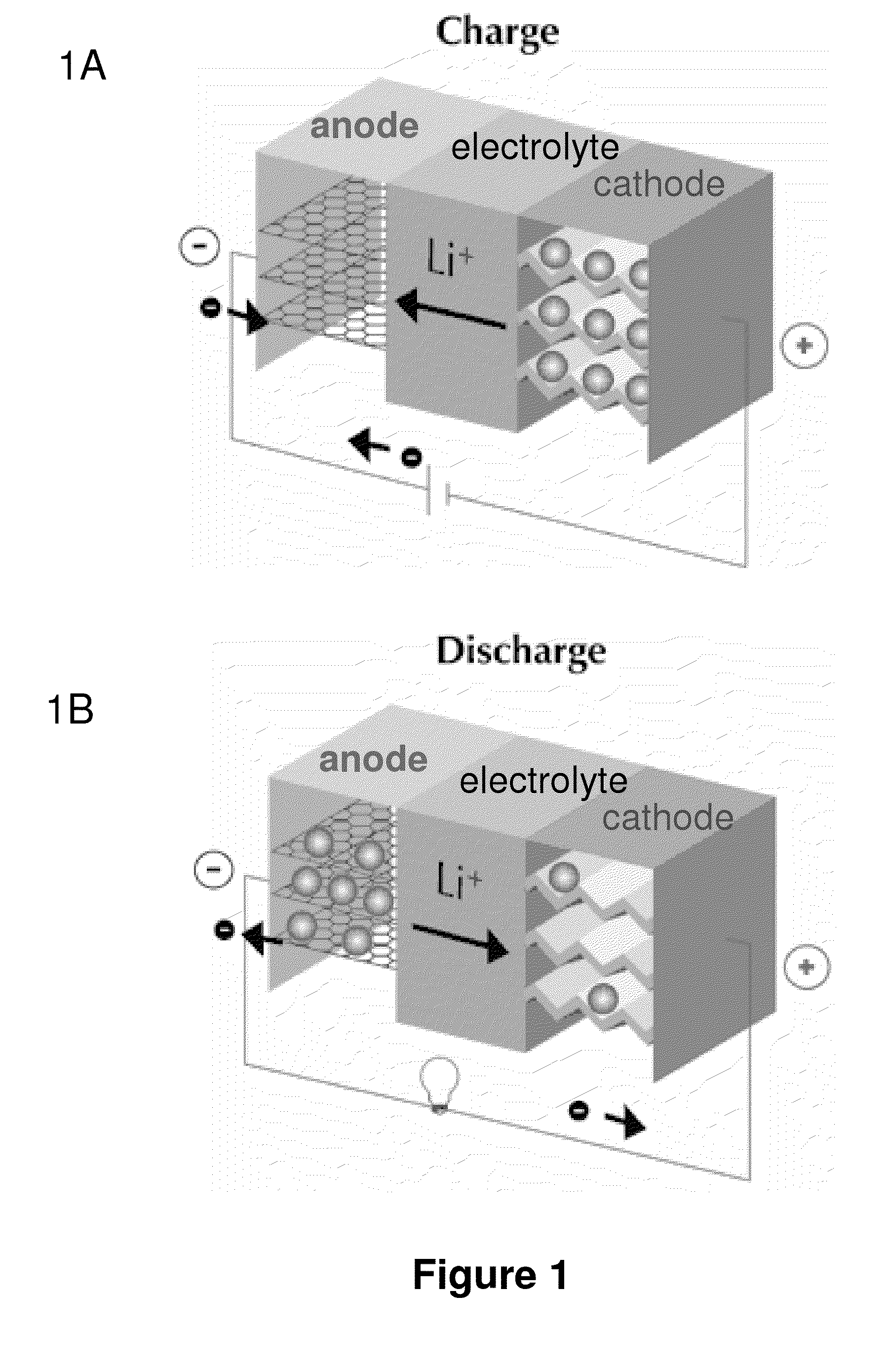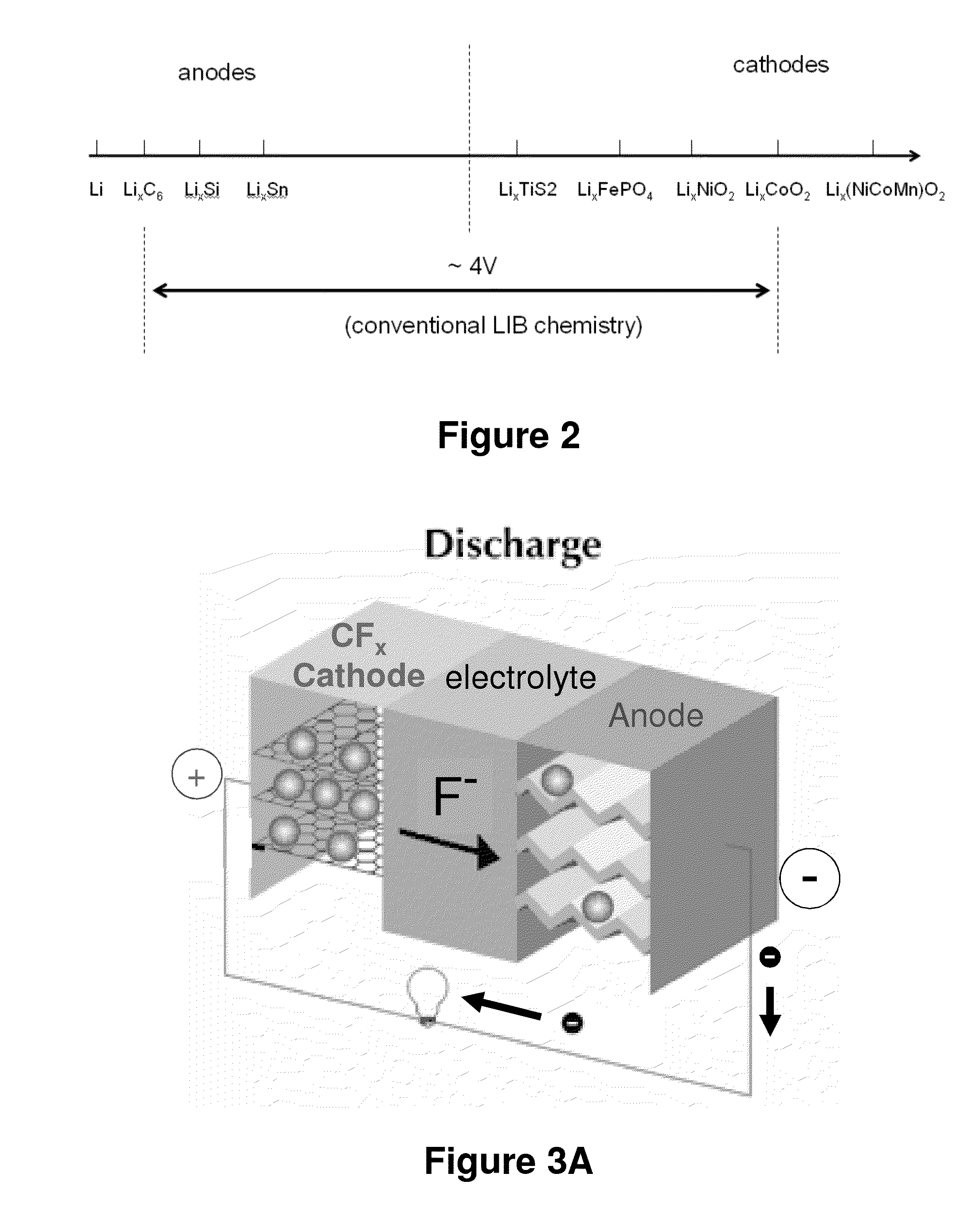Lithium ion fluoride electrochemical cell
a technology of electrochemical cells and lithium ions, applied in secondary cells, non-aqueous electrolyte cells, cell components, etc., can solve the problems of low cell voltage, substantial loss of specific energy achievable in these systems, and conventional state of the art dual intercalation lithium ion electrochemical cells are currently limited to providing average operating voltage, etc., to achieve good electrical power source performance, useful discharge rate capability, and high specific energy
- Summary
- Abstract
- Description
- Claims
- Application Information
AI Technical Summary
Benefits of technology
Problems solved by technology
Method used
Image
Examples
example 1
Fluoride Ion Secondary Electrochemical Cell with Li / CFx Half Cell Configurations
1.a. Introduction
[0174]To demonstrate the benefits of the present fluoride ion electrochemical cells, cells comprising a CFx positive electrode and metallic lithium negative electrode were constructed and evaluated with respect to electrochemical performance. The results shown here demonstrate that fluoride ion electrochemical cells exhibit useful rechargeable capacities under reasonable charge-discharge rates at room temperatures.
1.b. Experimental
[0175]Two types of carbon fluorides CFx were synthesized and used as positive electrodes in lithium cells in this example; 1) stoichiometric (commercial) CF1 based on coke and, 2) sub-fluorinated CFx (x<1) based on graphite and multi-walled carbon nanotubes (MWNTs). Carbon fluoride is obtained from high temperature fluorination of coke graphite or MWNT carbon powders, following reaction:
C(s)+x / 2F2(g)→CFx(s) (s=solid and g=gas)
Several kinds of fully fluorinated ...
example 2
Anion and Cation Receptors for Fluoride Ion Electrochemical Cells
[0195]This example provides summary of anion and cation receptors useful in the present invention. A number of fluoride ion receptors are specifically exemplified that are capable of enhancing solubility of fluoride salts and capable of enhancing the ionic conductive of electrolytes in electrochemical cells of the present invention.
[0196]In an embodiment, an electrolyte of the present invention comprises an anion receptor having the chemical structure AR1:
wherein R1, R2 and R3 are independently selected from the group consisting of alkyl, aromatic, ether, thioether, heterocyclic, aryl or heteroaryl groups which are optionally substituted with one or more halogens, including F, alkyl, alkoxide, thiol, thioalkoxide, aromatic, ether or thioether.
[0197]In an embodiment, an electrolyte of the present invention comprises a borate-based anion receptor compound having the chemical structure AR2:
wherein R4, R5 and R6 are select...
example 3
[0203]FIGS. 23A and 23B provide schematics of a lithium ion fluoride electrochemical cell of the invention illustrating charge (23A) and discharge (23B) behavior. As shown in FIGS. 23A and 23B, the lithium ion fluoride electrochemical cell of this embodiment comprises a carbon nanofiber positive electrode, a graphite negative electrode and an electrolyte comprising LiPF6 and KF dissolved in a solvent comprising a mixture of EC and DMC. The arrows in FIGS. 23A and 23B schematically illustrate accommodation of F and Li+ ions by positive electrode and negative electrode, respectively, during charging; and illustrate release of F− and Li+ ions by positive electrode and negative electrode, respectively, during discharging.
[0204]Two half cells were prepared having the following positive and negative electrodes: 1) with MWNT (multiwalled carbon nanotube) cathode, and 2) with MCMB (graphite) anode. The half cells were individually cycled several times. In these e...
PUM
| Property | Measurement | Unit |
|---|---|---|
| electrochemical oxidation/reduction potential | aaaaa | aaaaa |
| operating temperatures | aaaaa | aaaaa |
| voltages | aaaaa | aaaaa |
Abstract
Description
Claims
Application Information
 Login to View More
Login to View More - R&D
- Intellectual Property
- Life Sciences
- Materials
- Tech Scout
- Unparalleled Data Quality
- Higher Quality Content
- 60% Fewer Hallucinations
Browse by: Latest US Patents, China's latest patents, Technical Efficacy Thesaurus, Application Domain, Technology Topic, Popular Technical Reports.
© 2025 PatSnap. All rights reserved.Legal|Privacy policy|Modern Slavery Act Transparency Statement|Sitemap|About US| Contact US: help@patsnap.com



